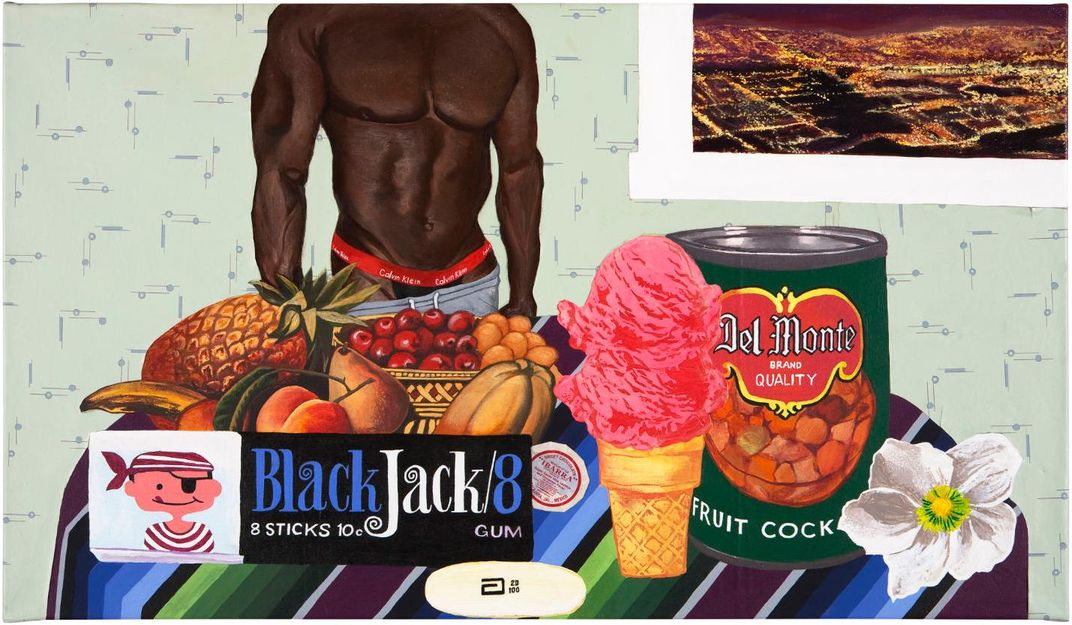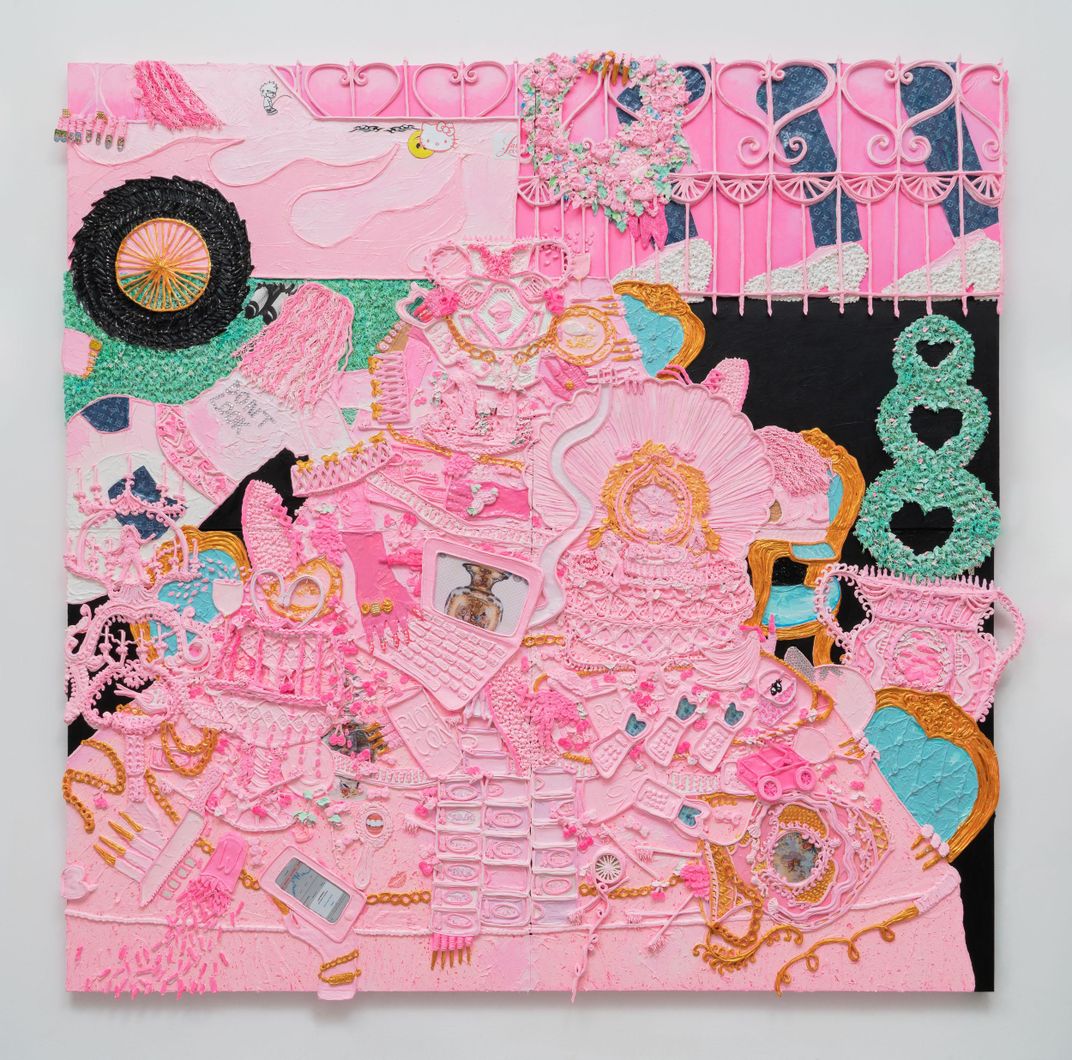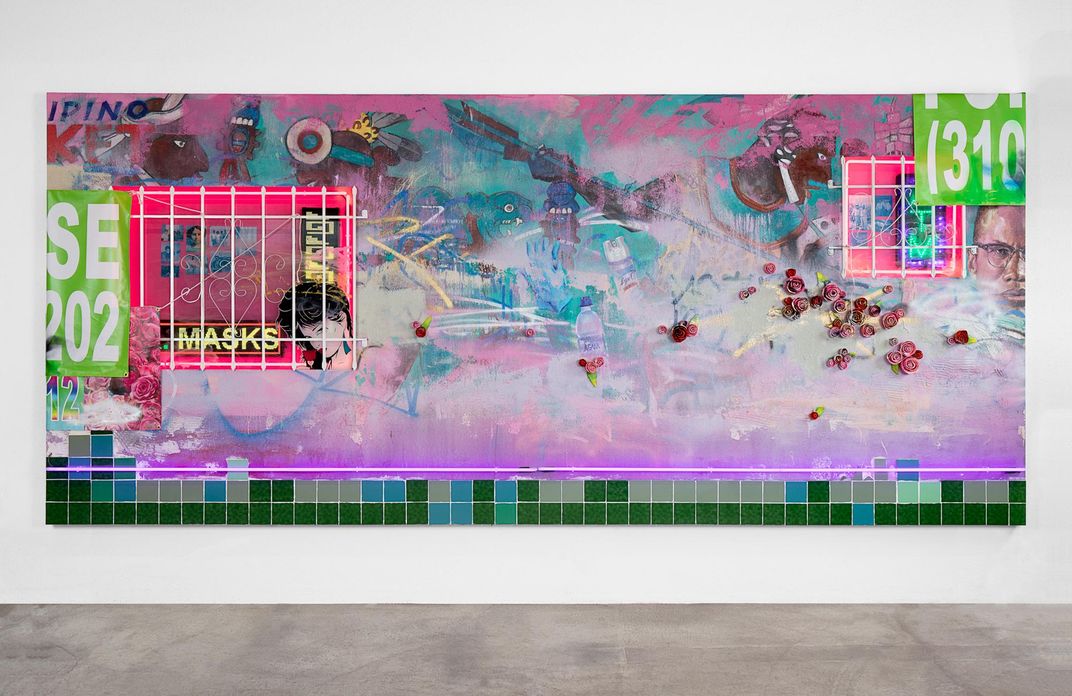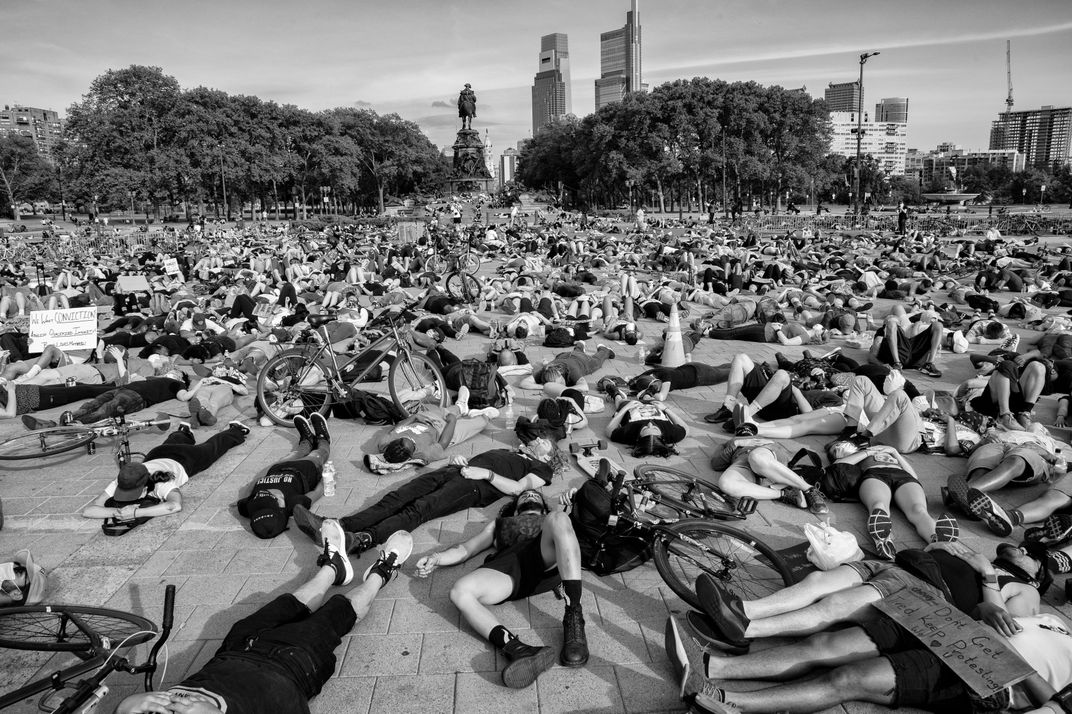How a Sweeping Survey in NYC Redefines What It Means to Make ‘Latinx’ Art
A new triennial at El Museo del Barrio features a wide range of works by 42 artists and collectives
:focal(1014x585:1015x586)/https://tf-cmsv2-smithsonianmag-media.s3.amazonaws.com/filer/cf/5b/cf5b9108-82b6-49c7-80ca-5e4d1c246d6c/alvarez-candida__estoy-bien-recto_2017.jpg)
Chicago-based artist Candida Alvarez created the painting Estoy Bien—a vibrant, pastel-colored work featuring abstract splashes of coral, aqua blue and white paint—in the wake of Hurricane Maria’s devastation in 2017. Its Spanish title, which translates to “I’m good,” references a phrase she heard repeatedly while searching for her mother and sister, who were living in Puerto Rico at the time.
“[W]e all know what that means,” Alvarez told ARTnews’ Claire Voon last year. “That means: ‘We’re holding.’ It’s an abbreviation, a pause. You don’t want to get into it. It’s a way to hold space.”
Four years after Hurricane Maria, as pandemic-weary Americans’ lives begin to regain a semblance of normalcy, Alvarez’s painting has taken on new resonance. Now on view at El Museo del Barrio in New York City, Estoy Bien also served as a source of inspiration for the cultural institution’s first post-lockdown exhibition: “Estamos Bien—La Trienal 20/21.”
As the museum, which showcases art by Latino, Caribbean and Latin American creators, says in a statement, curators realized that the plural version of the 2017 work’s title doubled as a reference to a song by Puerto Rican rapper Bad Bunny. The show’s name, the statement adds, “is simultaneously a declaration of defiant resilience and a provocation, conflating a sarcastic and a positive tone.”
“Estamos Bien” is a comprehensive survey of works by 42 artists and collectives living across the U.S. and Puerto Rico, reports Mexican newspaper El Universal. The show, which is set to run through September 26, is the museum’s first nationwide, large-scale display of Latino art. El Museo, for its part, uses the more academic term Latinx, a “much-debated gender-neutral and (the museum argues) culturally embracing alternative to Latino or Latina,” as Holland Cotter points out for the New York Times.
“Some of these artists are very known in their regions, and they have their careers and a following there, but they haven’t been shown in New York much,” curator Rodrigo Moura tells Kristen Tauer of Women’s Wear Daily (WWD). “We came up with one initial rule: We wanted to present artists that had never shown at El Museo before.”
Alvarez, who has worked with the museum in some capacity since the 1970s, is the one exemption to this caveat, Moura adds.
Though the show was originally slated to overlap with the 2020 census and presidential election, curators pushed its unveiling to March 13 due to the pandemic, writes Beatriz García for Al Día.
“While ‘Estamos Bien’ was already in formation, these concepts have only grown more pressing in light of the global pandemic and its effects on BIPOC communities, as well as this country’s growing recognition of the Black Lives Matter and other social justice movements,” says curator Susanna V. Temkin in the statement.
The museum’s executive director, Patrick Charpenel, tells the Wall Street Journal’s Charles Passy that the survey stems from “the level of exclusion that the Latinx community is facing.”
Latino artists remain underrepresented in museum collections and exhibitions, Chaperenel notes. More broadly, the Covid-19 pandemic has taken a disproportionate toll on Latino communities, as the Center for American Progress reported earlier this month.
“Estamos Bien” features artists from across Latin America and Guyana, as well as some who identify as Indigenous—an inclusive framing that “shatters [the] rigidity within the ‘Latino’ label,” writes Barbara Calderón for Artnet News.
Many of the pieces included in the show speak to such overarching themes as class politics, racism and humans’ toll on the environment. Eddie Aparicio’s City Bus Memorial (2016), for instance, is a 9-foot artwork made from a rubber mold of a ficus tree that once stood in Los Angeles. By capturing the texture of the tree—which has “strong ties to pre-Hispanic cultures in Central America,” per the statement—Aparicio “creates a dialogue between past and present, … [underscoring] the complex colonial underpinnings of our contemporary cities.”
Another artist who aptly addresses questions of identity is Raelis Vasquez, a young, New York–based painter who creates visuals of his family in the Dominican Republic. One of his works, The Other Side of Tourism (2019), depicts a wan-looking woman attending to a customer—presumably a tourist—at the end of a long day.
These works, and the many others included in the exhibition, speak to the varying experiences and cultures of the artists who created them. As the Journal notes, the survey also debuts at a point when other major New York museums, including the Metropolitan Museum of Art, the Museum of Modern Art and the Whitney Museum of American Art, have recently hosted or plan to host shows similarly highlighting Latino artists.
“We need to rewrite the cultural history of the United States,” says Charpenel in the statement. “This exhibition will serve as an opportunity to continue this important work, further expanding our understanding of cultural legacy, American history and the art historical canon.”
“Estamos Bien” is on view at El Museo del Barrio in New York City through September 26. Visitors must obtain timed tickets prior to entry.
/https://tf-cmsv2-smithsonianmag-media.s3.amazonaws.com/accounts/headshot/Isis_Davis-Marks_thumbnail.png)




/https://tf-cmsv2-smithsonianmag-media.s3.amazonaws.com/filer/79/47/7947729d-5f05-4a07-88df-84b30ad43de9/aparicio-eddie_city-bus-memorial1.jpg)
/https://tf-cmsv2-smithsonianmag-media.s3.amazonaws.com/filer/e3/d8/e3d85844-31f2-437d-92a1-0b655da48711/vasquez-raelis_tourism.jpg)

/https://tf-cmsv2-smithsonianmag-media.s3.amazonaws.com/accounts/headshot/Isis_Davis-Marks_thumbnail.png)